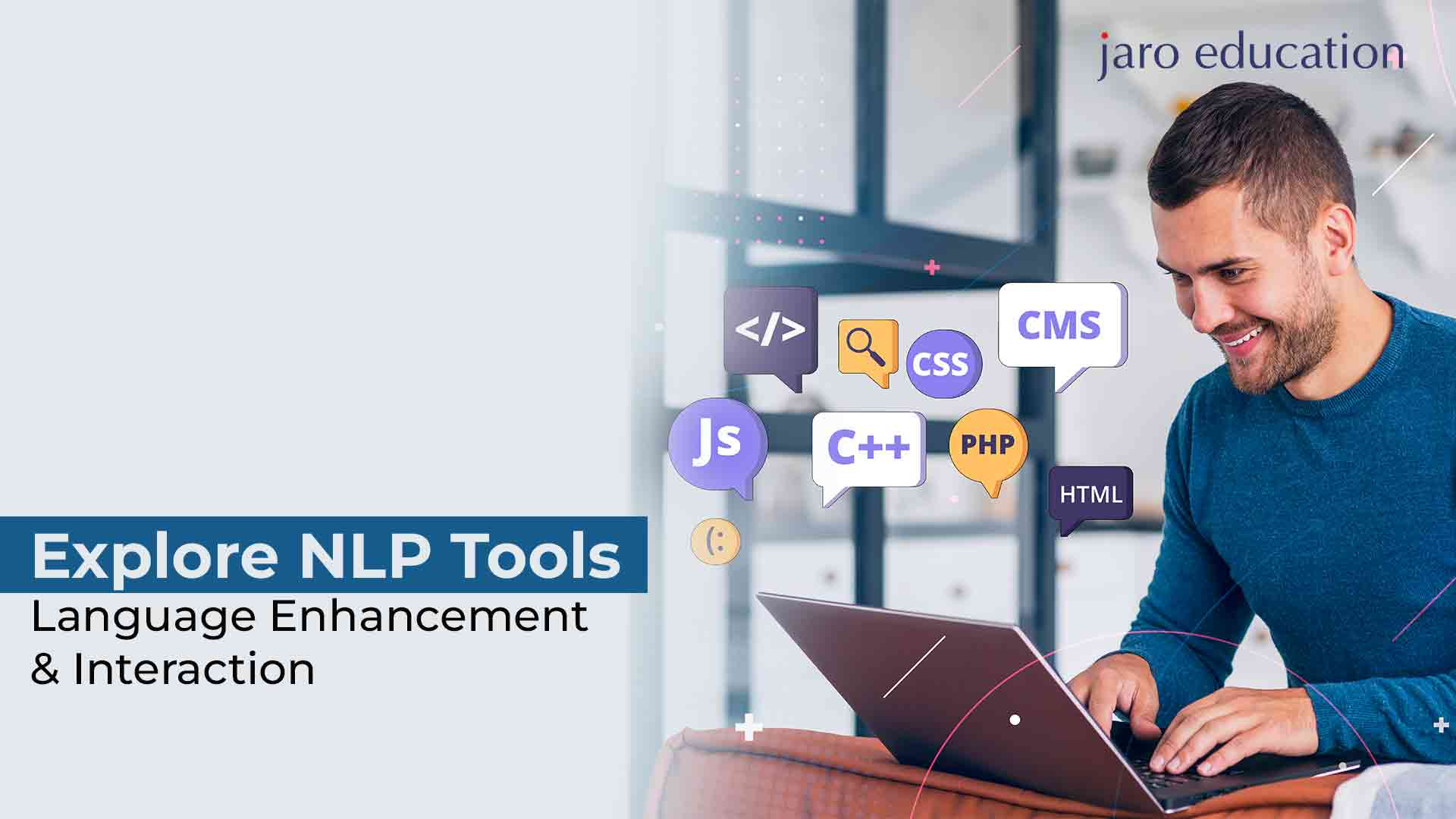
Explore NLP Tools – Language Enhancement & Interaction
Table Of Content
What is the Work of NLP?
What are the NLP Tools Available in the Market?
Advantages of Natural Language Processing
What is the Work of NLP?
NLP (Natural Language Processing) uses various algorithms and breaks down human voice data and text to help computers understand their expression. There are several tasks of NLP, which include:
Sentiment Analysis
NLP tools aim to gather subjective aspects from text, like confusion, emotion, sarcasm, suspicion and attitude from a text.
NEM
Also known as Named Entity Recognition, it identifies phrases or words as important entities. NEM is a part of NLP that may recognize ‘Riya’ as a woman’s name and ‘Starbucks’ as an eatery.
Speech Recognition
Turning voice input into text data is called speech-to-text. Speech recognition is an important work of NLP for applications that respond to voice commands or enquiries.
Language Disambiguation
NLP determines the meaning of a word with several meanings using semantic analysis to discover which word makes the most sense in the current context.
Co-reference Resolution
Determining whether two words refer to the same item is known as co-reference resolution.
Grammatical Tagging
Grammatical tagging is also called a part of speech tagging. It is a task of NLP to identify the part of speech of a given word or piece of text according to its context and use.
Natural Language Generation
It is the opposite of speech recognition. Here, NLP structures information into human language.
What are the NLP Tools Available in the Market?
Natural Language Processing assists businesses in making and discovering useful insights from unstructured text as well as solving a number of text analysis challenges, such as subject categorisation, sentiment analysis and more. Various ready-to-use NLP tools can be run through open-source libraries or SaaS (software as a service). The top NLP tools are:
Google Cloud
The Google Cloud Natural Language API includes different pre-trained models for entity extraction, sentiment analysis and content categorization.
NLTK
The Natural Language Toolkit (NLTK) in Python is a significant tool for developing Natural Language Processing (NLP) models.
TextBlob
A Python module, TextBlob extends NLTK and enables businesses and individuals to execute the same. NLP operations in a more intuitive and user-friendly interface.

*medium.com
Stanford Core NLP
Stanford University’s NLP community maintains the well-known library Stanford Core NLP.
SpaCy
SpaCy is a modern open-source Python module for Natural Language Processing, known for its remarkable speed, user-friendliness, extensive documentation, and robust data handling capabilities.
Flair
Flair is a simple Natural Language Processing tool that was developed by Zalando Research.
NLP Architect
NLP Architect is an open-source Python library for NLP, developed by Intel.
Amazon Comprehend
It is a natural language processing (NLP) service embedded in the Amazon Web Services architecture.
IBM Watson
Present in the IBM Cloud, IBM Watson is a suite of AI services that provides Natural Language Understanding as the key feature.
Advantages of Natural Language Processing
The primary advantage of NLP is that it enhances how people and computers interact with one another. The computer’s language – Code, is the most direct approach to influencing a computer. Interacting with computers becomes much more intuitive for people as computers learn to grasp human language.
NLP’s other advantages are as follows:
- Helps to perform sentiment analysis
- Improves the efficiency and accuracy of documentation
- Utilising NLP, personal assistants such as Alexa comprehend spoken words.
- Provides the ability to automatically make a readable summary of complex and larger unique texts.
- Allows organisations to use chatbots for customer support
- Offers useful insights into analytics that were once difficult to reach due to the volume of data.
Explore Popular Blogs on Data Science
Thus, Natural language processing is critical to technology and how humans interact with it. It is utilized in a wide range of real-world applications, including chatbots, cybersecurity, search engines, and big data analytics.
As an important aspect of Data Science, mastering Natural Language Processing offers great career opportunities to professionals. And if you pursue a specific course, it can advance various job roles in reputed companies. IIM Kozhikode is offering a Professional Certificate Programme in Data Science for Business Decisions, which is one such course that provides students with critical and analytical thinking abilities in programming and data science.

